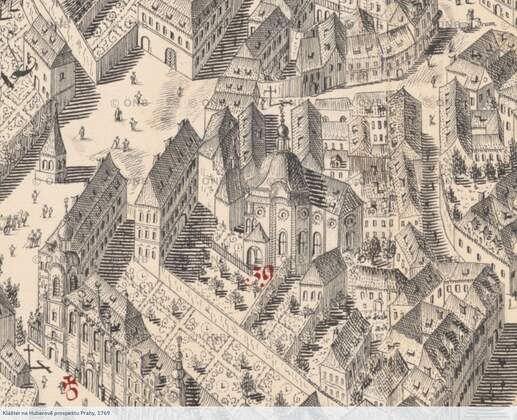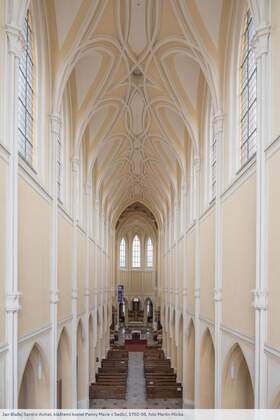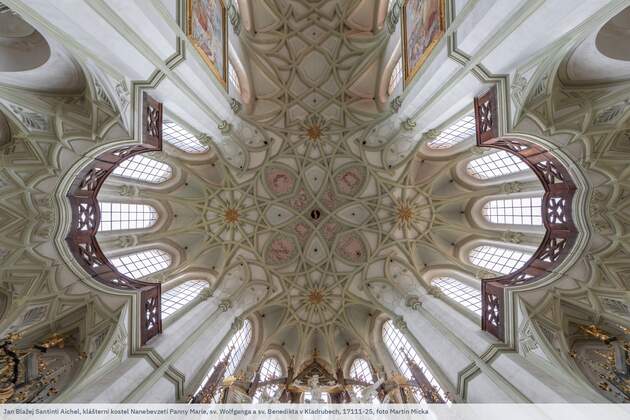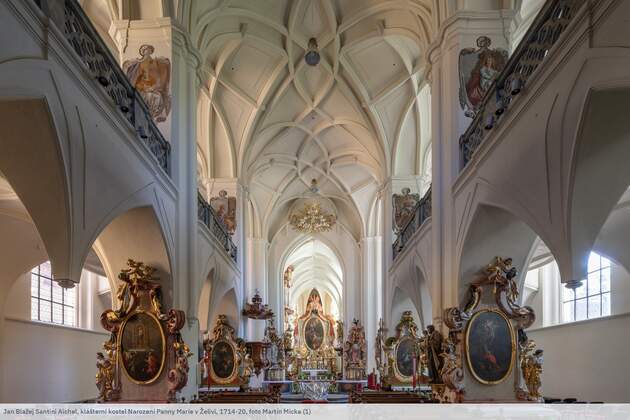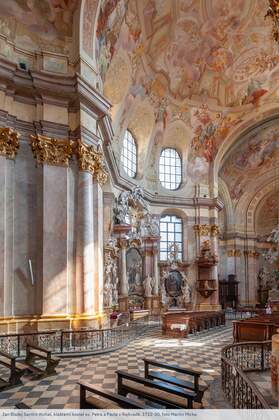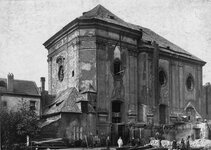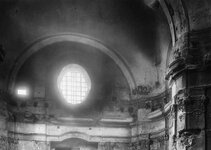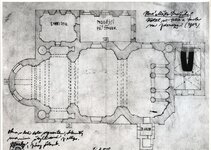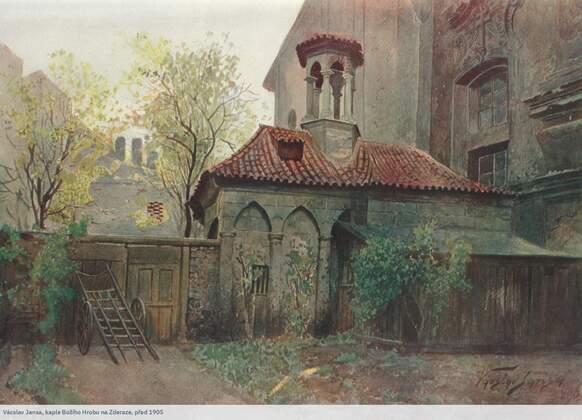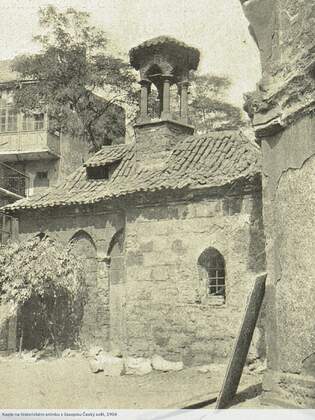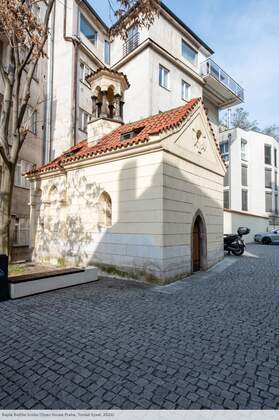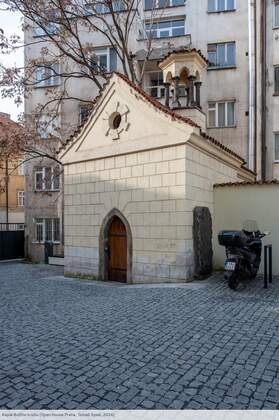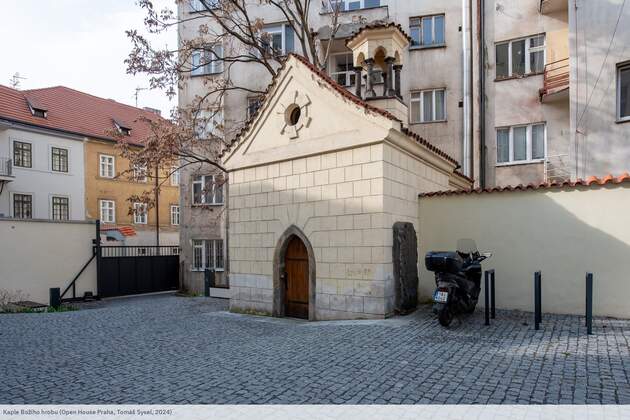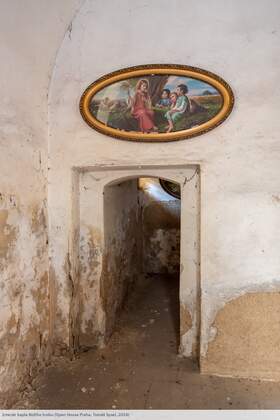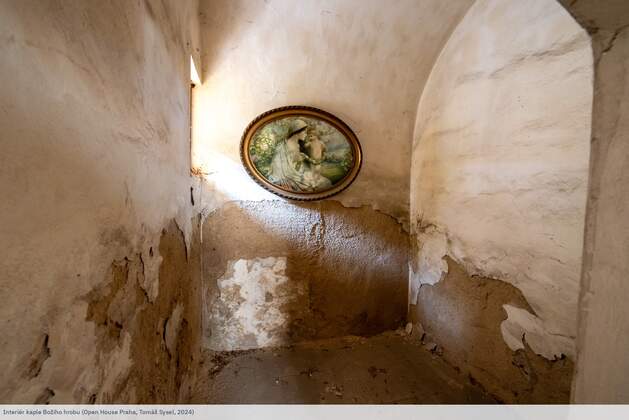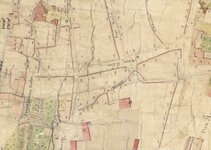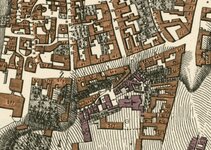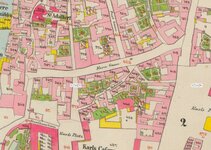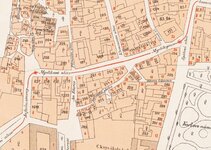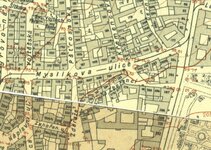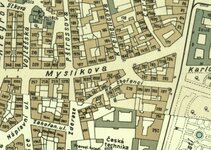The name of the place "Na Zderaze" recalls its earliest history. Its name is derived from Zderad - a member of King Vratislav’s retinue, who had his fortress here and who founded the first church of St. Peter and Paul after 1090. The strategic location of the site, situated on an elevated terrace above the river on the important road to Vyšehrad, led to the founding of the monastery of the Knights of the Holy Sepulchre at the end of the 12th century. The reasons for founding the monastery on this site may have been similar to those that led to the founding the community of Knights Hospitaller in the Lesser Town or the Knights of the Red Cross monastery at Charles Bridge - i.e. the protection of Prague's suburbs, which were not yet protected by walls. The Order of the Knights of the Red Cross was founded in the early 12th century in Jerusalem to protect the Holy Sepulchre. The Zderaz Monastery was the only canonry of this order in Bohemia, and despite various historical obstacles it remained there until secularization in 1784.
Illustration: The church in the context of development before the foundation of the New Town (map by Vilém Lorenc) – according to Vilém Lorenc, New Town of Prague, Prague 1973, p. 31





